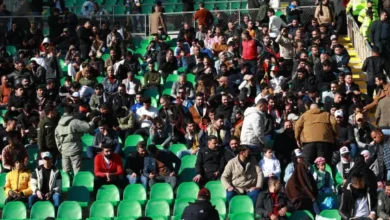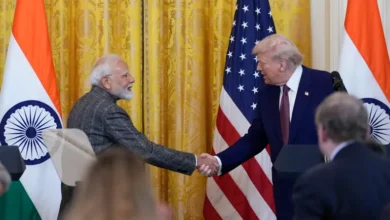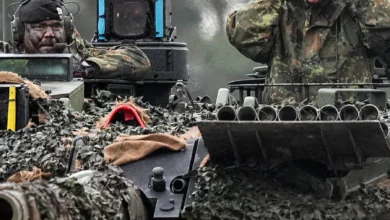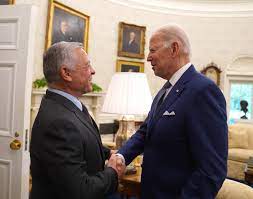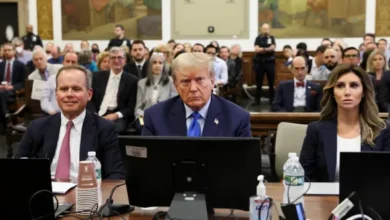With U.S. Blessing: Nuclear Weapons in the Hands of an Extremist Israeli Government

Israel’s ongoing efforts to build and develop nuclear weapons pose a serious threat to the Arab region and the broader Middle East—especially under a far-right government whose ministers, such as Itamar Ben-Gvir and Bezalel Smotrich, have frequently called for the use of such weapons against neighboring populations under the pretext of “self-defense.”
The possession of powerful and destructive weapons by this extremist government represents a grave danger to the entire region. U.S. support for Israel’s nuclear facilities, and the shielding of these sites from the oversight of the International Atomic Energy Agency (IAEA), effectively amounts to endorsing Israel’s acts of violence and its ongoing threats and intimidation toward countries in the region and the world at large.
While Washington has opposed the establishment of peaceful nuclear reactors in Saudi Arabia and, together with Tel Aviv, bombed Iran for 12 consecutive days, it simultaneously assists in the development of Israel’s nuclear facilities—violating nuclear non-proliferation treaties, particularly those pertaining to nations engaged in conflict.
Iraq’s Osirak reactor was bombed on June 7, 1981, and Syria’s Al-Kibar reactor was destroyed on September 5, 2007, despite both projects being described as peaceful in nature.
The new Israeli nuclear reactors are said to produce weapons far more powerful than earlier ones, particularly through their enhanced plutonium-production capabilities for building nuclear arsenals.
Israel’s continued nuclear production comes amid its ongoing war crimes in Palestine, with the United States supplying it with specialized equipment and materials, while providing diplomatic cover and protection for these projects in international forums.
The Dimona reactor remains the central hub for Israel’s nuclear weapons program. Spanning an area of 36 square kilometers, it includes not only the main reactor but also the underground Mishon-2 complex, where plutonium for weapons production is manufactured.
The first revelations about Israel’s secret nuclear program came from Mordechai Vanunu, a former technician at the Dimona facility, who fled to the United Kingdom in 1986. He disclosed shocking details to The Sunday Times, stating that “Dimona can produce up to 40 kilograms of plutonium annually—enough to build 10–20 nuclear warheads each year.” Production capacity has reportedly doubled since then, and according to the Bulletin of the Atomic Scientists (2022), Israel now possesses around 90 nuclear warheads.
Experts believe the heavy-water reactor (L-102) at the Mishon-1 site has increased its capacity to 150 megawatts or more, enabling Israel to produce at least two new nuclear weapons each year.
There is little doubt that Israel also has the capability to reprocess plutonium from aging or decommissioned warheads. Over time, stored plutonium degrades and requires chemical and radiological reprocessing to restore its military viability, according to scientific and media reports.
A report by the Associated Press noted that construction has intensified at a key facility long suspected to be part of Israel’s nuclear weapons program, based on satellite images analyzed by experts.
The report quoted experts suggesting that the project could involve either a new reactor or a facility for assembling nuclear weapons, though the secrecy surrounding the program makes definitive conclusions difficult.
Renewed construction activity at the Shimon Peres Negev Nuclear Research Center (commonly known as Dimona) has reignited debate about Israel’s status as the only presumed nuclear-armed state in the Middle East.
Experts consulted by AP believe the work is linked to Israel’s suspected nuclear weapons program, given its proximity to Dimona, which has no civilian power generation function. However, opinions differ regarding the exact nature of the new construction.
The site’s location and scale—appearing to include multi-story underground structures—strongly suggest that the project involves building a new heavy-water reactor, which could produce plutonium and other key materials for nuclear weapons.
Analysts also indicated that the work might involve the construction of a new warhead assembly facility.
AP first reported the excavation at the site, roughly 90 kilometers south of Jerusalem, in 2021. At that time, satellite images showed crews digging a pit approximately 150 meters long and 60 meters wide near the original heavy-water reactor.
More recent images show extensive new construction, including reinforced concrete walls and what appear to be multiple underground levels, with cranes visible above the site.
Although details of the Dimona complex remain highly classified in Israel, Vanunu’s disclosures in the 1980s—complete with photographs—led experts to conclude that Israel had already produced dozens of nuclear warheads.
Israel is one of only four countries that have not signed the Treaty on the Non-Proliferation of Nuclear Weapons (NPT), meaning the IAEA has no authority to inspect Dimona.
When asked about the construction activity, the IAEA reiterated that Israel “is not obliged to provide information on its nuclear facilities beyond the Soreq research reactor.”
